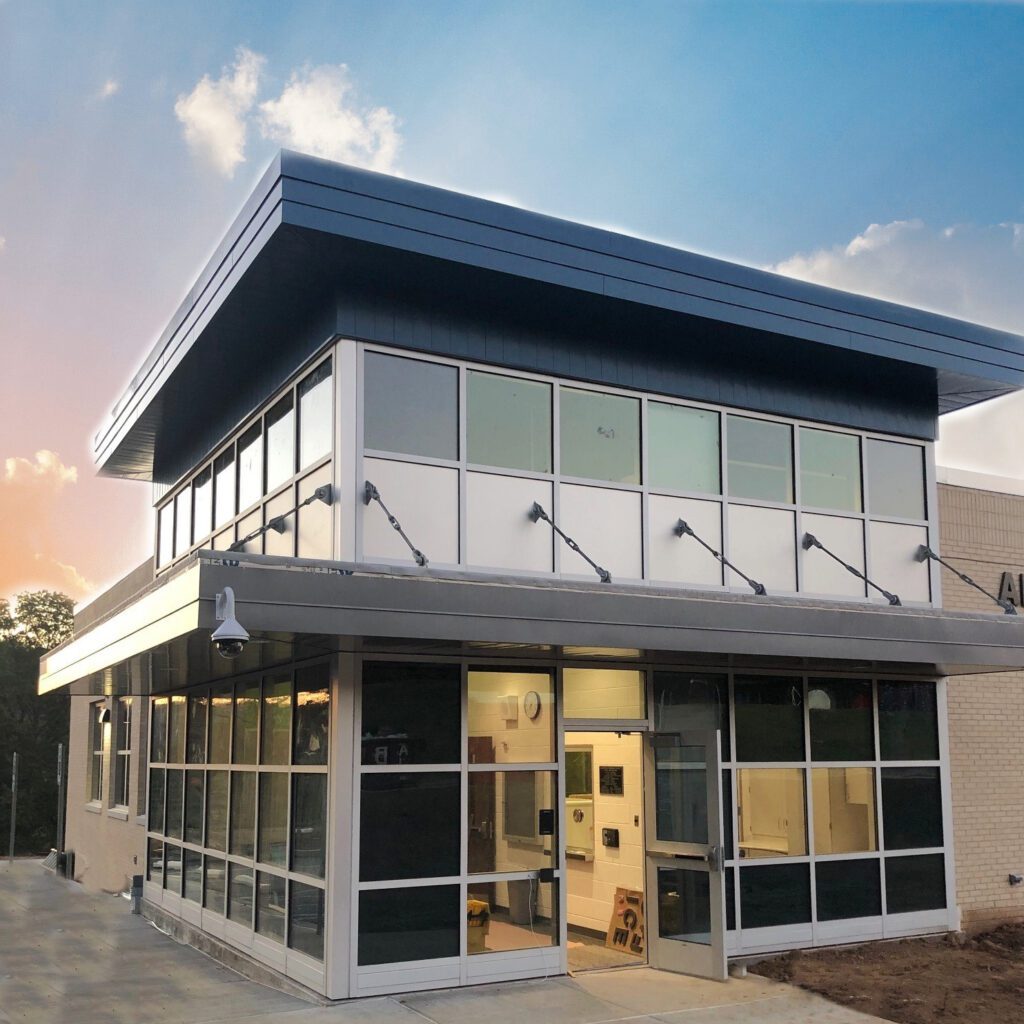The cost of cleaning glass surfaces, whether internal or external, can add up over the course of a year. But dirty glass can be even more expensive if it creates a negative impression for occupants and visitors. Is there a way to maximize cleaning efficiency and reduce operational costs while keeping glass surfaces looking pristine? Consider low-maintenance glass. Traditional glass requires regular manual cleaning and maintenance, which not only increases labor costs but also consumes time and environmental resources. On the other hand, low-maintenance and self-cleaning glass options keep surfaces looking clean with less of a burden. Here’s how it works.
Coating Applications: New vs. Existing Glass
You might wonder whether low-maintenance coatings can be applied to your building’s existing glass or if new installations are necessary. The main types of self-cleaning coatings are hydrophilic, hydrophobic, and photocatalytic coatings. These are typically integrated during the manufacturing process for new glass, but there are some treatments that can be applied to existing installations. However, the effectiveness of field-applied coatings may vary and requires professional consultation and application for best results.
If you’re working on a new build or considering an upgrade to existing glass, consider using a low-maintenance glass that was manufactured with these coatings already integrated.
Hydrophilic Glass Coatings
Hydrophilic means “attracted to water” and these coatings cause water to be attracted to the glass, spread evenly across the surface in sheets, and slide off with almost no friction. Rather than forming droplets, water flows freely across the surface, allowing dirt and grime to be washed away. This sheeting action drastically reduces water spots and streaks and helps maintain a crystal-clear appearance.
Hydrophobic Coatings
Unlike hydrophilic coatings that attract water, hydrophobic coatings repel it. When water hits the surface of hydrophobic-treated glass, it forms beads that roll off, taking dirt and contaminants with them. This is commonly known as the “lotus effect” because it mimics how water beads up and rolls off a lotus leaf.
Photocatalytic Coatings
Where hydrophilic and hydrophobic coatings work by controlling water adhesion, photocatalytic coatings actively break down organic substances on the glass surface. When exposed to natural sunlight, the coating initiates a chemical reaction that dissolves organic materials into harmless compounds, which are then washed away by rain or a light rinse. This type of coating is mainly used externally in urban settings where air pollution can accumulate on the surface of the glass.
Benefits of Low-Maintenance Glass
There are three main reasons to choose low-maintenance glass:
- Cost-Effectiveness – Over time, the reduced need for manual cleaning can pay for itself. Labor costs diminish when maintenance needs are lower, the lifespan of the glass can be extended by photocatalytic coatings that protect exterior glass surfaces, and these benefits create a cost-effective investment in the long run.
- Environmental Responsibility – The decreased need for cleaning agents and water usage during window washing aligns with sustainability goals. Photocatalytic coatings can be used in high-touch and medical settings to help reduce virus and bacteria transmission, and the need for fewer harsh cleaning products makes it an attractive option for those committed to environmentally responsible building practices.
- Enhanced Transparency – Hydrophilic, hydrophobic, and photocatalytic coatings contribute to a more transparent, cleaner appearance, which enhances the aesthetics of your commercial property.
What Options Are Available?
The self-cleaning and low-maintenance glass market is evolving globally as new manufacturing techniques and coatings are developed. These are some of the leading brands to consider:
- Saint-Gobain: A French multinational corporation, Saint-Gobain is known for its wide range of glass solutions, including self-cleaning and low-maintenance coatings.
- Guardian Glass: This U.S.-based company offers a variety of coated glass options, including hydrophilic and hydrophobic coatings for commercial and residential buildings.
- AGC Glass: Based in Belgium, AGC produces a wide variety of glass types, including those with advanced coatings for self-cleaning properties.
- Pilkington: A UK-based glass manufacturer, Pilkington offers various specialty glass products, including self-cleaning glass with hydrophilic properties.
- Vitro Architectural Glass: Formerly known as PPG Glass, this company provides a range of specialty glass coatings and is based in the U.S.
Low-maintenance and self-cleaning glass options present an innovative solution for commercial building owners and facility managers. Whether used externally or internally in high-traffic areas, each option offers unique advantages that can reduce maintenance costs, improve aesthetics, and contribute to a more sustainable footprint.
To find out how these glass options can be incorporated into your new or existing build, give us a call! Our experts can help you find a solution that works for your facility.
